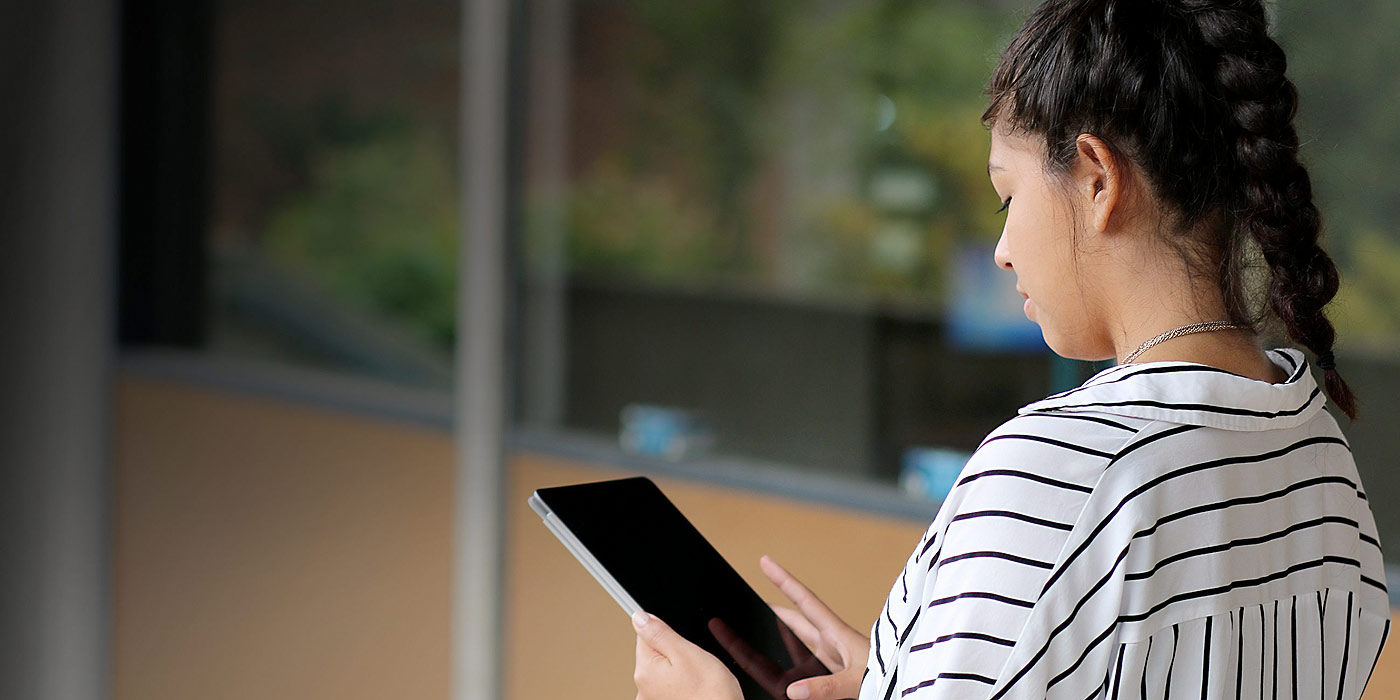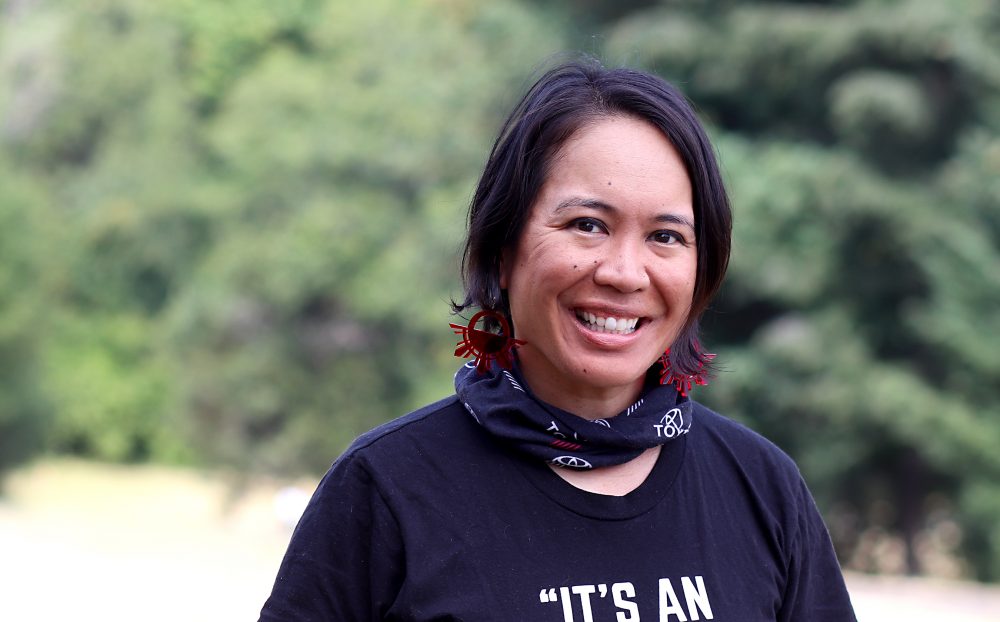This content was published: August 24, 2020. Phone numbers, email addresses, and other information may have changed.
Profiles From a Distance: Instructor Faith Curammeng quickly adapts to a new ‘virtual’ normal
Photos and Story by Celina Baguiao
As Portland Community College continues with its online and remote operations, faculty have had to adjust their teaching strategies for the new normal.
PCC President Mark Mitsui recently announced the college will remain in remote/online instruction and operations through the end of fall term. In addition, leadership is planning to continue remote operations and instruction for winter term as well. PCC has been mostly online and remote since March 20.
Since the shift to the virtual world, communication studies instructor Faith Curammeng had to quickly adapt. As an adjunct faculty member with three classes, the sports enthusiast helped many students navigate a different way of learning while gaining valuable advice by her colleagues along the way.

Virtual Admissions
- PCC helps students reach their goals. Get started by connecting with the college’s admissions team virtually! From one-on-one appointments and group info sessions to recorded sessions and steps for new students, Virtual Admissions has it all.
Here’s her story of innovation in a time of the coronavirus pandemic:
How did the pivot from in-person to online teaching go?
Faith Curammeng: In the spring (and my plan for the fall too) is to have lectures recorded and available during the online class. So I had a synchronous Zoom lecture that I recorded for students who weren’t able to attend to watch later. I’m thankful for the Communication Department, specifically instructor Stacie Williams, for creating a “Public Speaking” online class shell, as that helped a lot. Additionally, the department held weekly Zoom meetings to talk about remote teaching and share or troubleshoot issues that came up. We met for the entire spring term. They were optional meetings, but I found them to be helpful as I missed talking to colleagues after classes on campus.
The biggest challenge for me was doing lectures at home while sitting on my couch. I really feed off the energy of being in a classroom, so it took me a while to get used to sitting in my living room and giving lectures. I also know that I have a dry and witty sense of humor that comes out when I’m in a face-to-face class, but online, I feel sometimes that can get misinterpreted when I interact with students, so I had to be really careful.
Spring quarter was one of the most challenging terms I’ve ever had, and I am thankful for my students who were able to roll with all the changes and new ways of doing classes. They were very supportive and understanding.
What were some of the challenges that students faced?
Curammeng: I know a few of my students didn’t have access to the Internet at home, so they drove to a PCC campus to connect. Several students had to wait until really late at night and into the wee hours of the morning to log on to D2L because they had to share a computer with the whole family or they’d have to wait until everyone was asleep before they could work on homework or give their speech.
What has helped you most with teaching online?
Curammeng: I think the time I spent working in TV news helped me be able to expect the unexpected and make quick decisions as needed. I also have a core group of teacher friends who have been really supportive and helpful.
What are your plans for your future classes?
Curammeng: Currently, I’m working on creating scripts for lecture videos that will be more student-friendly. Instead of long lecture videos that I did in the spring, I’ll be breaking up the information into tiny bite-sized videos. I am also working to create a video to help my students navigate my D2L courses. I’ve learned that instructors set up their classes in different ways, so it makes it easier to give my students a road map for how I organize my class shells. Each class has its own personality, so I will remain flexible and listen to students.
I hope to learn more about what is working for students and what isn’t working, so I can make changes to my classes as needed. From a nerdy perspective, I’m also going to connect my course activities to the specific PCC course outcomes, so it’s clearer to students how the activities are connected and to make sure they are getting what they need and want from my classes. My hope is, now that many students have been thrust into the remote learning environment, they are more familiar with D2L and Zoom/Google Meets, so we’ll be able to spend less time troubleshooting the technical aspects of the remote/online environment and more time on the content.
What kind of support do you think students could use at this point?
Curammeng: In talking with PCC students and my friends who are college students, I think flexibility is one way to help support students right now. The world of education (and really the country) is in a great state of flux right now, so the more flexible we can be, the easier it can be for students to succeed in our classes.
What have you learned from the move to remote/online operations?
Curammeng: It’s hard not to sound cliché or use some of the worn-out terms we’ve been hearing since mid-March, but the pandemic/stay-at-home order has reminded me not to take anything for granted. I have learned various ways to stay connected with friends and family. I’ve also learned that I’ve been secretly training for something like this as an introvert. But even as an introvert, I really miss face-to-face interaction.
Thank you, Faith!

